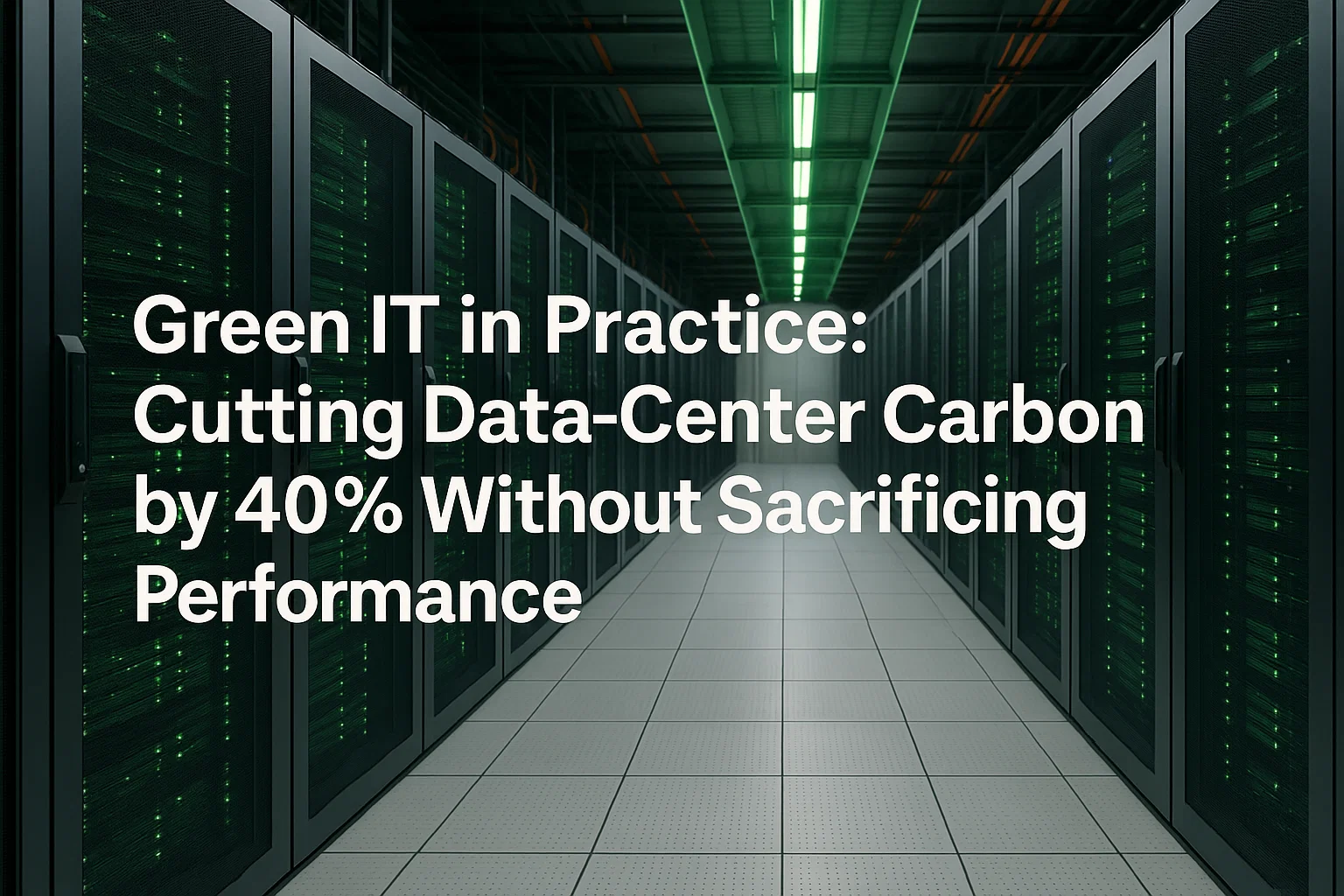Green IT in Practice: Cutting Data-Center Carbon by 40 % Without Sacrificing Performance
Sustainable computing that still gets the job done

Sustainable computing is no longer optional. Businesses large and small are under pressure to reduce their environmental footprint without sacrificing performance. This introduction lays out why green IT matters and how it can save both money and the planet.
Cutting carbon emissions doesn’t mean sacrificing computing power. By combining efficient hardware, clever cooling, and smart software practices, modern data centers can slash energy use while still meeting performance requirements.
1 Smarter Hardware Choices
Low-power processors and solid-state drives may cost a bit more upfront, but they consume less electricity and generate less heat. That in turn reduces the burden on your cooling systems. Use server utilization metrics to consolidate workloads and retire aging machines that sit idle.
2 Cooling with Care
Traditional air conditioning is energy-intensive. Many facilities now employ free-air or evaporative cooling to leverage ambient temperatures. Hot aisle/cold aisle layouts direct airflow more efficiently, while liquid cooling offers another option for high-density racks. These approaches can reduce power consumption dramatically.
3 Software Efficiency
Virtualization lets you run multiple workloads on fewer physical machines. Likewise, container orchestration helps you scale resources up and down automatically. Combined with power-aware scheduling algorithms, you’ll use only what you need, when you need it. Monitoring tools then track progress toward your sustainability goals.
4 The Payoff
Implementing green IT strategies often results in substantial cost savings thanks to lower energy bills. It also improves your company’s environmental footprint—a win for both the bottom line and the planet.
5 Historical Context
Early data centers consumed massive amounts of power with little regard for efficiency. Over the last decade, rising energy costs and environmental concerns pushed operators to innovate. From modular facilities to renewable energy contracts, the focus on sustainability has become mainstream.
6 Pros and Cons
Pros
- Lower operating expenses through reduced energy usage
- Positive brand perception for eco-friendly initiatives
- Often qualifies for tax incentives or green credits
Cons
- Upfront investments in new hardware or retrofits can be steep
- Advanced cooling systems require specialized maintenance
7 Quick Wins
- Conduct an energy audit to identify inefficient equipment.
- Implement server power management policies during low-traffic periods.
- Explore renewable energy options like solar or wind to offset consumption.
8 Conclusion
Greening your data center doesn’t have to compromise performance. By combining modern hardware, smarter cooling, and efficient software practices, you’ll cut carbon emissions and set an example for sustainable technology operations.
9 Historical Background
Early data centers consumed vast amounts of power with little regard for efficiency. Rising energy costs and environmental awareness in the 2000s sparked new designs focused on reducing waste. Innovations such as virtualization, improved cooling, and renewable energy sourcing have since become standard.
10 Pros and Cons
Green initiatives cut electricity bills and may qualify organizations for tax incentives. They also enhance public image. Initial costs can be significant, though, especially when replacing old hardware or retrofitting cooling systems.
11 Actionable Tips
- Audit your energy usage to identify quick wins.
- Consolidate workloads with virtualization and containerization.
- Explore free-air cooling and renewable power sources.
12 Measuring Impact
Track metrics such as power usage effectiveness (PUE) to quantify progress. Publish sustainability reports to keep stakeholders informed and motivated.
13 Conclusion
Adopting green IT practices is both an environmental and business imperative. With careful planning, you can reduce emissions while maintaining—if not improving—overall performance.
14 Future Trends
As energy grids become greener, data centers can further reduce their carbon footprint by aligning operations with periods of renewable energy abundance. Advances in AI-driven cooling and workload scheduling promise even greater efficiencies in the years ahead.
15 Practical Example
Consider a mid-sized data center that replaced aging servers with energy-efficient models and adopted hot/cold aisle containment. Coupled with an agreement to purchase renewable electricity, the facility cut energy usage by 40 percent within a year while delivering faster response times for customers.
16 Conclusion
Going green doesn’t require compromising performance. Through strategic upgrades and vigilant monitoring, data centers can thrive economically while supporting a healthier planet.